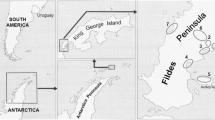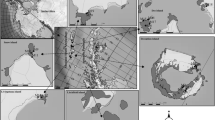Abstract
Plants harvested in the Canary Islands Lanzarote and Fuerteventura were analyzed for the yeasts inhabiting their surface. Half of the isolates (22 out of 44) were identified as Debaryomyces hansenii. Black ascomycetes, viz. Hortaea werneckii and two Hormonema species were represented by 7 strains. Basidiomycetous yeasts, viz. Cryptococcus sp. (8 strains), Rhodotorula sp. (5 strains), Cerinosterus cyanescens (1 strain) and Pseudozyma sp. (1 strain) constituted a minority of 33%. Thirty strains were screened for their ability to assimilate various plant constituents including lipids of the cuticle and the cell membrane, hemicelluloses, nitrogenous compounds (protein, nucleic acids, amino acids) and benzene compounds. All strains were able to assimilate or to hydrolyze lipids, lecithin included. Many strains of D. hansenii, H. dematioides, H. werneckii, C. cyanescens, Cr. laurentii, Pseudozyma sp. and Rh. glutinis were proteolytic. Hemicelluloses like xylan and pectin were assimilated by black ascomycetous yeasts, Cryptococcus sp., Pseudozyma sp. and Rh. glutinis. Ferulic and hydroxycinnamic acids, gallic and tannic acids were assimilated by some strains of H. dematioides, C. cyanescens, Pseudozyma sp. and Rhodotorula sp.
Similar content being viewed by others
References
Barnett JA, Payne RW & Yarrow D (1990) Yeasts, characteristics and identification, 2nd Ed., Cambridge University Press
Boekhout T (1995) Pseudozyma Bandoni emend. Boekhout, a genus for yeast-like anamorphs of Ustilaginales. J. Gen. Apl. Microbiol. 41: 359–366
Bramwell D & Bramwell Z (1974) Wild flowers of the Canary Islands. Stanley Thornes, London and Butford
Dantzig AH, Zuckermann SH & Andonov-Roland MM (1986) Isolation of a Fusarium solani mutant reduced in cutinase activity and virulence. J. Bacteriol. 168: 911–916
Di Menna ME (1959) Yeasts from the leaves of pasture plants. New Zealand J. Agric. Res. 2: 394–405
Eijkman C (1901) Ueber Enzyme bei Bakterien und Schimmelpilzen. Zentralblatt Bakteriol. Parasitenk. Abt. I 29: 841–848
Haddock EA, Gupta RK, Al-Shafi SMK & Haslam E (1982) The metabolism of gallic acid and hexahydrodiphenic acid in plants. Part 1. Introduction, naturally occurring galloyl esters. J. Chem. Soc. Perkin Trans. 1: 2515–2524
Hartley RD & Jones EC (1977) Phenolic components and degradability of cell walls of grass and legume species. Phytochemistry 16: 1531–1534
Hohenester A & Welss W (1993) Exkursionsflora für die Kanarischen Inseln. Eugen Ulmer, Stuttgart
Kreger-van Rij (Ed.) (1984) The yeasts, a taxonomic study, 3rd. Ed., Elsevier Science Publishers, Amsterdam
Last (1957) Seasonal influence of Sporobolomyces on cereal leaves. Trans.Brit. Mycol. Soc. 38: 221–239
Middelhoven WJ (1993) Catabolism of benzene compounds by ascomycetous and basidiomycetous yeasts and yeastlike fungi. A literature review and an experimental approach. Antonie van Leeuwenhoek 63: 125–144
Middelhoven WJ, Hoogkamer-te Niet MC, De Laat, WTAM, Weijers, C & Bulder CJEA (1986) Oxidation of amines by yeasts grown on 1-aminoalkanes or putrescine as the sole source of carbon, nitrogen and energy. Antonie van Leeuwenhoek 52: 525–536
Middelhoven WJ, De Jong IM & De Winter M (1991) Arxula adeninivorans, a yeast assimilating many nitrogenous and aromatic compounds. Antonie van Leeuwenhoek 59: 129–137
Middelhoven WJ & De Hoog GS (1996) Hormonema schizolunatum, a new species of dothideaceous black yeasts from the phyllosphere. Antonie van Leeuwenhoek, in press
Middelhoven WJ & Van Baalen AJM (1988) Development of the yeast flora of whole-crop maize during ensiling and during subsequent aerobiosis. J. Sci. Food Agric. 42: 199–207
Morosoli R, Roy C & Yaguchi M (1986) Isolation and partial primary sequence of a xylanase from the yeast Cryptococcus albidus. Biochim. Biophys. Acta 870: 473–478
Rombouts FM & Thibault J-F (1986) Feruoylated pectic substances from sugar-beet pulp. Carbohydrate Research 154: 177–187
Ruinen J (1956) Occurrence of Beyerinckia in the “phyllosphere”. Nature 177: 220–221
Ruinen J (1961) The phyllosphere. I. An ecologically neglected milieu. Plant and Soil 15: 81–109
Ruinen J (1963) The phyllosphere. II. Yeasts from the phyllosphere of tropical foliage. Antonie van Leeuwenhoek 29: 425–438
Ruinen J (1965) The phyllosphere III. Nitrogen fixing in the phyllosphere. Plant and Soil 22: 375–394
Ruinen J. (1966) The phyllosphere. IV. Cuticle decomposition by microorganisms in the phyllosphere. Ann. Inst. Pasteur 111: 342–346
Sierra J (1957) A simple method for the detection of lipolytic activity of micro-organisms. Antonie van Leeuwenhoek 23: 15–22
Wieringa KT (1956) The microorganisms decomposing pectic substances in the dew retting process of flax. Neth. J. Agric. Sci 4: 204–209
Author information
Authors and Affiliations
Rights and permissions
About this article
Cite this article
Middelhoven, W.J. Identity and biodegradative abilities of yeasts isolated from plants growing in an arid climate. Antonie Van Leeuwenhoek 72, 81–89 (1997). https://doi.org/10.1023/A:1000295822074
Issue Date:
DOI: https://doi.org/10.1023/A:1000295822074




